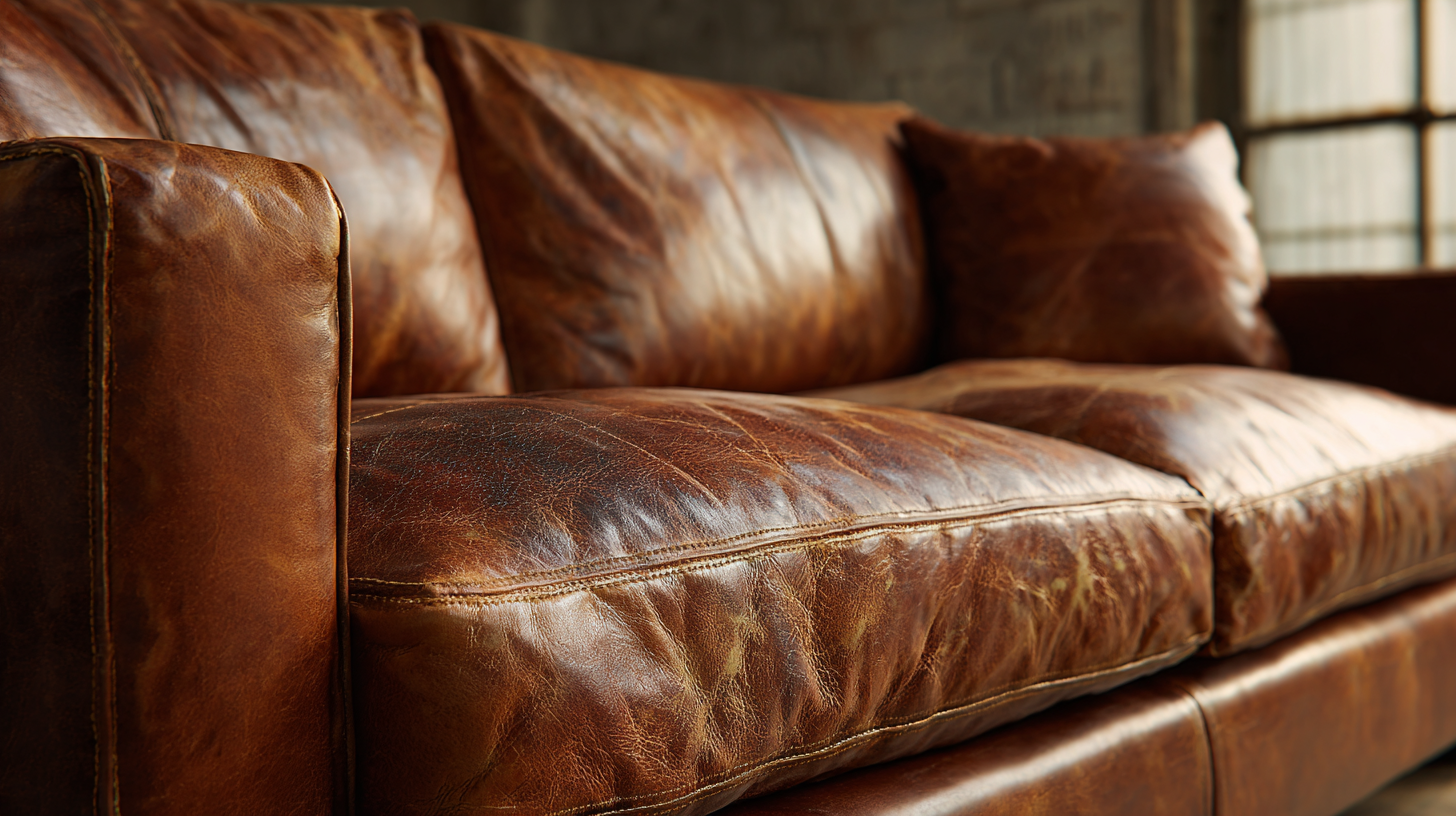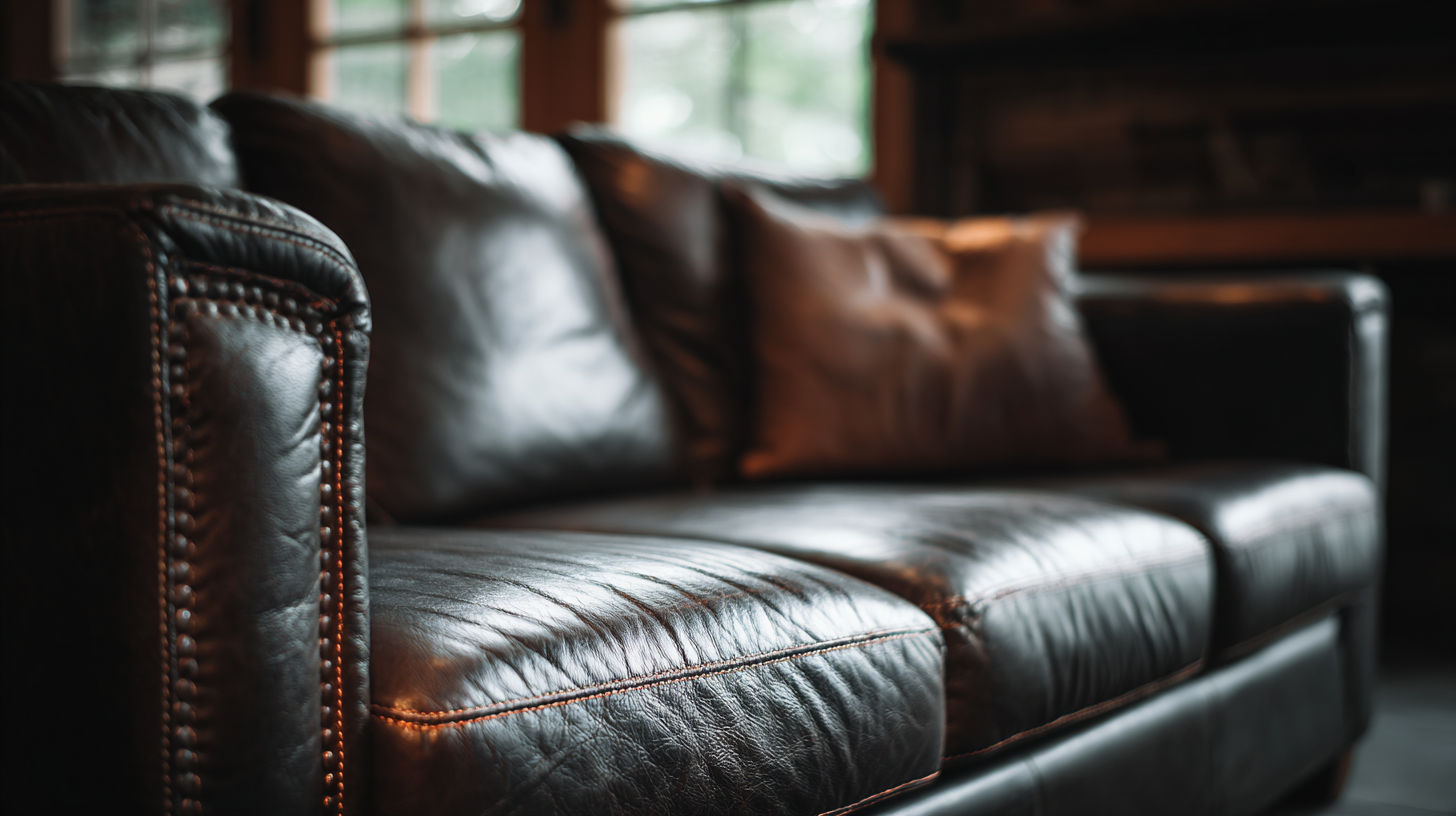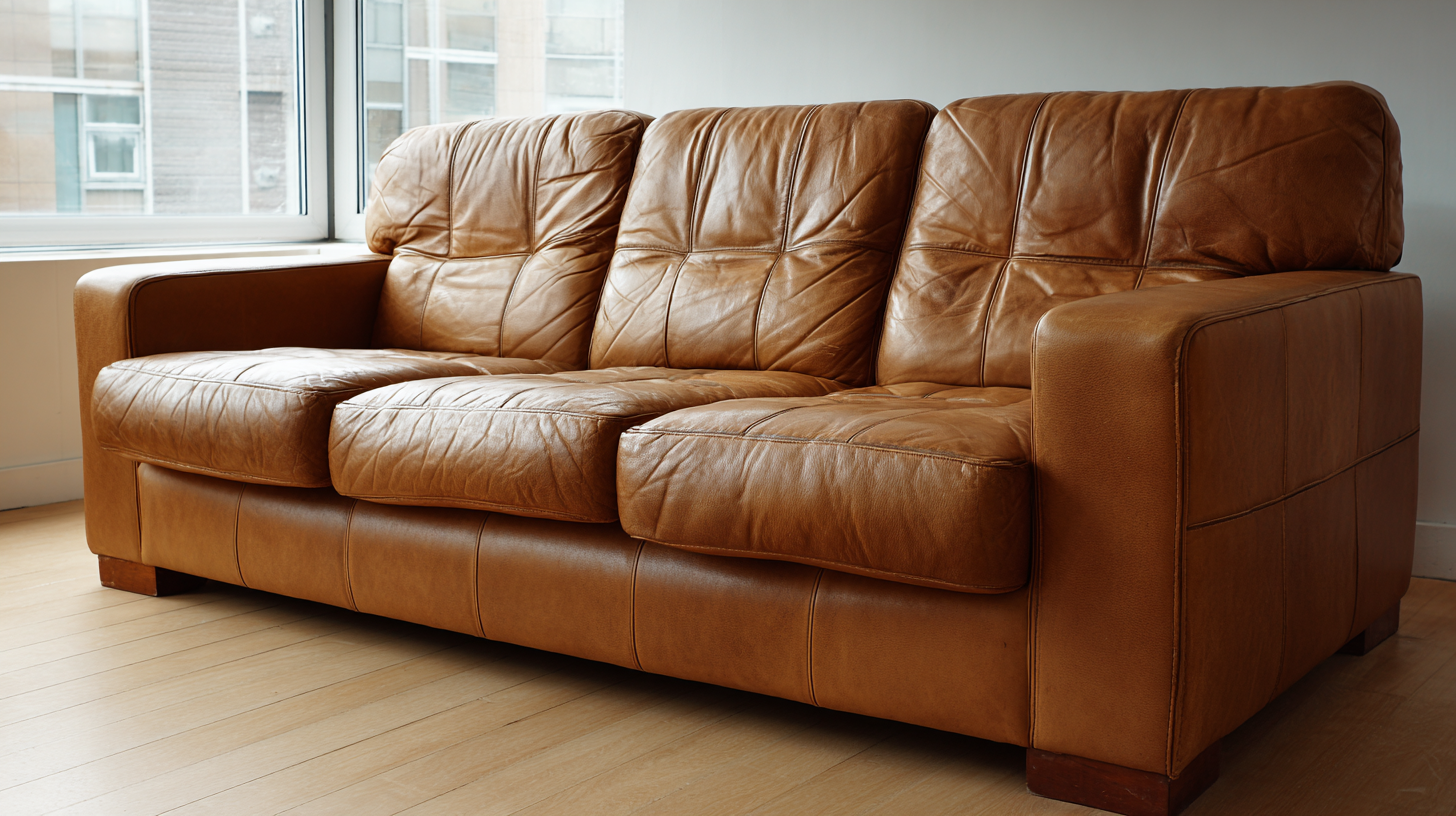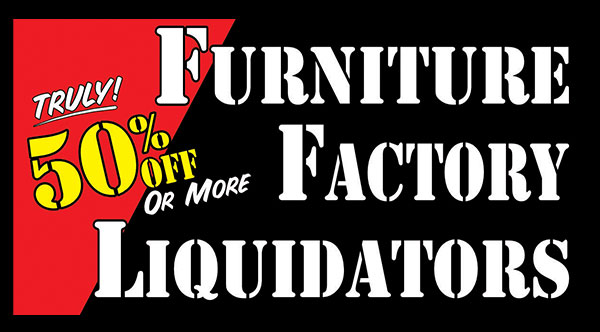Understanding Industry Production Standards for the Best Leather Sofa
The leather sofa has long been a symbol of luxury and durability in interior design, but as we approach 2025, the industry is evolving in response to emerging technological advancements and production standards. Recent reports from Grand View Research project that the global leather furniture market will reach $52.04 billion by 2025, driven by innovations in sustainability and manufacturing processes.

As consumer preferences shift towards environmentally-friendly products, companies are increasingly adopting practices that comply with stringent environmental guidelines. Understanding these industry production standards is crucial for both manufacturers and consumers looking to invest in a high-quality leather sofa that not only meets aesthetic desires but also aligns with sustainable practices.
This blog will explore the latest trends and technological developments shaping the leather sofa market, offering insights into making informed purchasing decisions.
Understanding Different Types of Leather: Characteristics and Applications in Furniture Design
When it comes to selecting the perfect leather sofa, understanding the different types of leather is crucial. Leather is categorized mainly into full-grain, top-grain, corrected-grain, and bonded leather, each possessing unique characteristics that influence their use in furniture design. Full-grain leather, known for its durability and natural appearance, retains the hide's original texture and is often the preferred choice for high-end sofas. Its breathability and ability to develop a beautiful patina over time make it an investment for long-lasting furniture.
On the other hand, top-grain leather is slightly more processed, removing imperfections while still preserving the natural look. This type offers a good balance between quality and affordability, making it a popular option for contemporary designs. Corrected-grain leather is treated to mask flaws, and while it can be more affordable, it may lack the luxurious feel of higher-quality varieties. Finally, bonded leather, made from leftover scraps bonded with polyurethane, is the least expensive option but usually sacrifices durability and authenticity. Choosing the right type of leather not only affects the aesthetics of a sofa but also its longevity and maintenance, making it an essential consideration in furniture design.
Understanding Industry Production Standards for the Best Leather Sofa
Understanding Different Types of Leather: Characteristics and Applications in Furniture Design
| Type of Leather | Characteristics | Applications in Furniture Design | Durability |
|---|---|---|---|
| Aniline Leather | Natural, soft, and breathable; retains the hide's natural markings. | High-end sofas, luxury furniture. | Less durable to stains; best for low-traffic areas. |
| Pigmented Leather | Coated for protection; uniform color and texture. | Everyday sofas, family rooms. | Highly durable and stain-resistant. |
| Nubuck Leather | Soft and velvety texture; sanded to create a fuzzy surface. | Stylish sofas, modern furniture. | Requires careful maintenance; not as durable as pigmented leather. |
| Bonded Leather | Made from leather scraps and polyurethane; eco-friendly option. | Budget-friendly sofas, accent chairs. | Less durable; may peel over time. |
| Suede Leather | Soft and textured; made from the underside of the hide. | Stylish furniture, desirable for upholstery. | Less durable and stains easily; best for more decorative use. |
Evaluating Leather Sofa Quality: Key Industry Standards and Certifications to Consider
When evaluating leather sofa quality, it's essential to consider key industry standards and certifications that can help you make informed decisions. The leather furniture industry has faced numerous quality disputes, as seen in recent reports highlighting ongoing issues that undermine consumer confidence. From government inspections revealing hidden quality crises to brands struggling with complaint management, awareness of these challenges is crucial for buyers.
One tip for consumers is to look for reputable certifications like the Leather Working Group (LWG) certification, which indicates that the leather used meets environmental and quality standards. Additionally, check for warranties or guarantees provided by manufacturers, as these often reflect a commitment to quality and customer satisfaction.
Another tip is to examine the details of the sofa's construction, such as the type of frame, quality of stitching, and finishing processes. Quality craftsmanship not only enhances durability but also contributes to the overall aesthetic appeal of the sofa. A thorough understanding of these aspects can significantly influence your choice and ensure that you invest in a leather sofa that stands the test of time.

How to Choose the Right Leather for Your Sofa: A Guide to Grades and Finishes
When selecting the right leather for your sofa, understanding the various grades and finishes is crucial. Leather grades are primarily classified into four categories: full-grain, top-grain, genuine leather, and bonded leather. According to the Leather Industries of America, full-grain leather is considered the highest quality due to its natural characteristics and durability. This type of leather retains the original grain and imperfections, making each piece unique while providing superior breathability and longevity.
In contrast, top-grain leather, which is the second-highest quality, undergoes a sanding process to remove imperfections, resulting in a more uniform appearance. While it lacks some of the breathability of full-grain leather, it is still exceptionally durable and less prone to staining. A recent market report from Grand View Research indicates that the global leather sofa market is projected to grow by 4.8% annually, driven by consumer preference for high-quality materials. Understanding these grades and choosing the right finish, such as aniline or pigmented, will ensure your investment in a leather sofa not only meets aesthetic desires but also withstands the test of time.
The Role of Sustainability in Leather Production: Industry Insights and Eco-Friendly Practices
The leather industry is increasingly recognizing the importance of sustainability in its production processes. According to a report by the International Leather Conservation Agency, approximately 60% of consumers are now prioritizing eco-friendly products, prompting manufacturers to adopt more sustainable practices. This includes sourcing hides from farms that implement ethical animal husbandry and using environmentally safe tanning methods. Traditional tanning processes often employ harmful chemicals, but a shift towards vegetable tanning methods has gained traction, reducing the environmental footprint of leather production.
Moreover, industry insights reveal a growing trend toward circular economy practices within the leather sector. A study by the Global Leather Technology Institute indicates that up to 15% of leather ends up as waste during production; however, innovative recycling processes are now transforming this waste into new materials for fashion and upholstery. These initiatives not only minimize waste but also conserve resources, aligning with the broader goal of sustainable manufacturing. As consumers demand transparency and accountability in production practices, the leather industry’s commitment to sustainability is essential for fostering consumer trust and ensuring long-term viability.
Understanding Industry Production Standards for the Best Leather Sofa
This chart illustrates the adoption of eco-friendly practices in the leather production industry, highlighting key areas such as waste management, sustainable sourcing, and energy use reduction. The data represents the percentage of companies implementing these practices in order to enhance sustainability efforts.
Comparative Analysis: Leather Sofa Durability vs. Other Upholstery Materials Based on Industry Data
When it comes to the durability of leather sofas compared to other upholstery materials, a comprehensive analysis reveals significant insights grounded in industry data. Leather, renowned for its rich texture and luxurious appeal, stands out in terms of longevity. Unlike synthetic materials, which may succumb to wear and tear over time, high-quality leather retains its allure through years of use. Factors such as proper care, maintenance, and the grade of leather used can dramatically affect the lifespan of a leather sofa, often making it a worthwhile investment for consumers seeking durability.
In contrast, other upholstery options, while potentially offering a lower initial cost, often fall short in durability. Fabrics such as polyester or cotton may be prone to fading, tearing, and staining, leading to more frequent replacements. As consumer preferences shift towards sustainable choices, understanding the performance of these materials is crucial. The comparison highlights not only the functional attributes of leather but also supports the importance of considering a sofa’s long-term value in the ever-evolving upholstery market. This analysis reiterates that when it comes to upholstery, quality should be prioritized, especially for items like sofas that see daily use.


